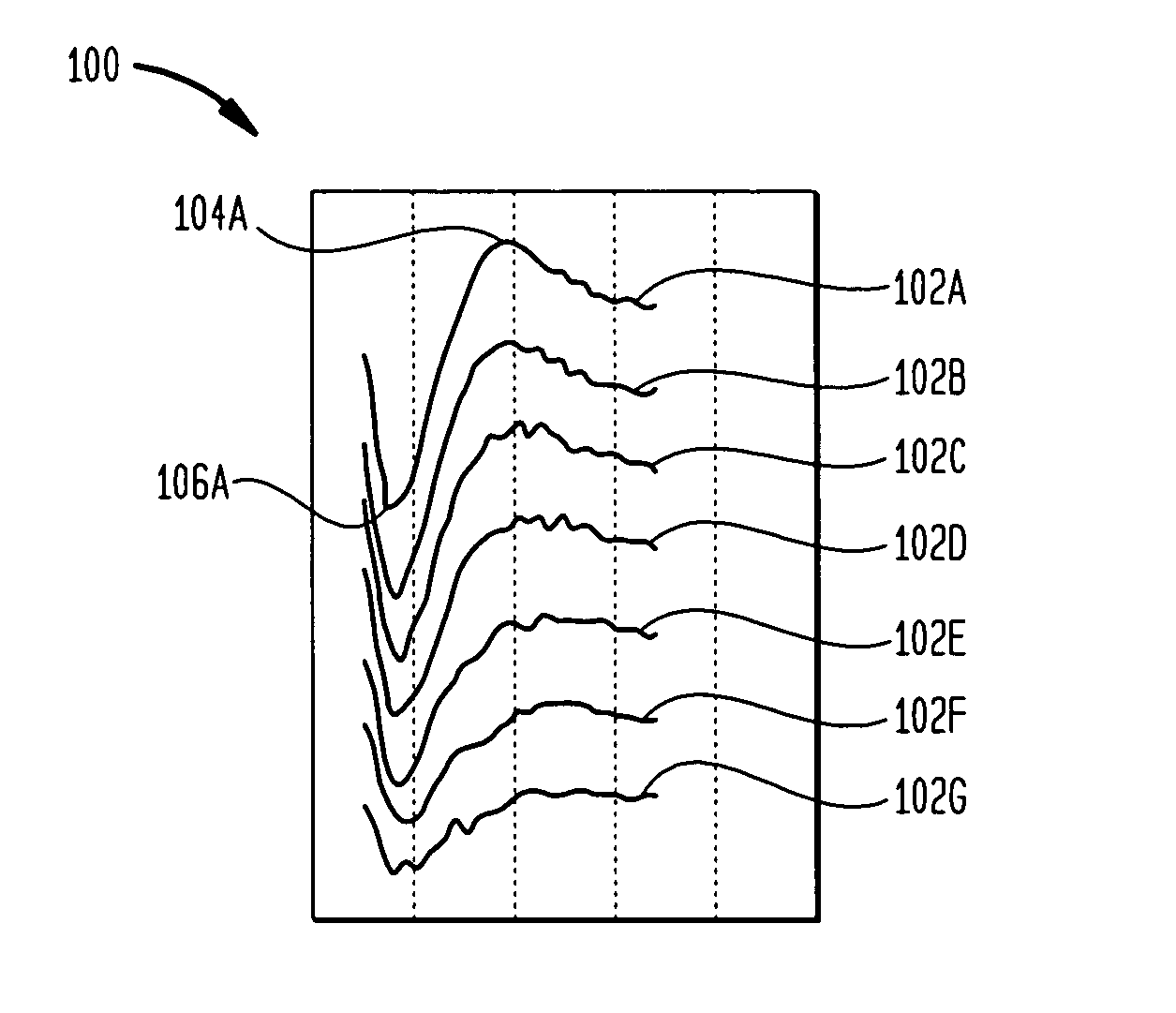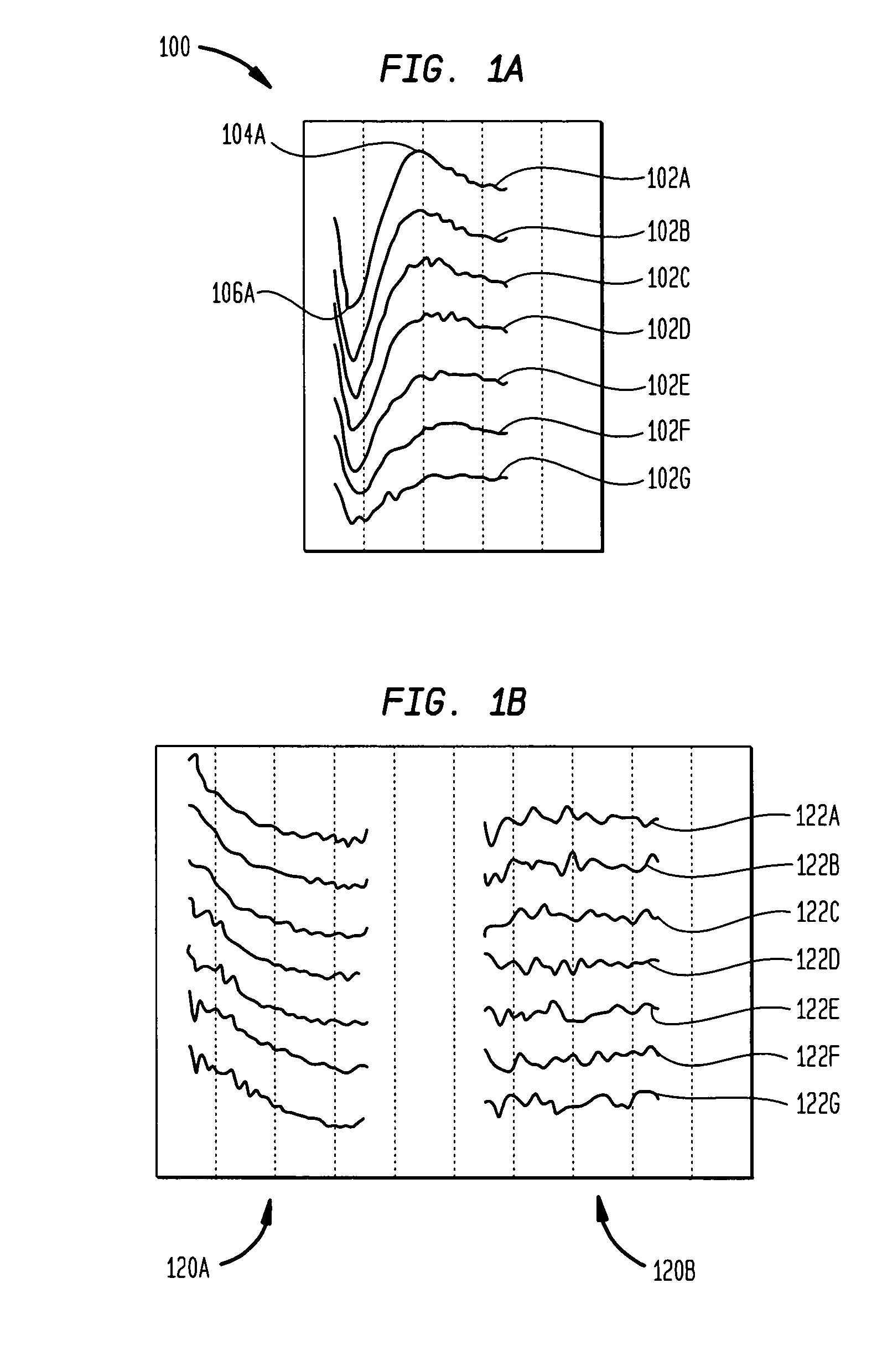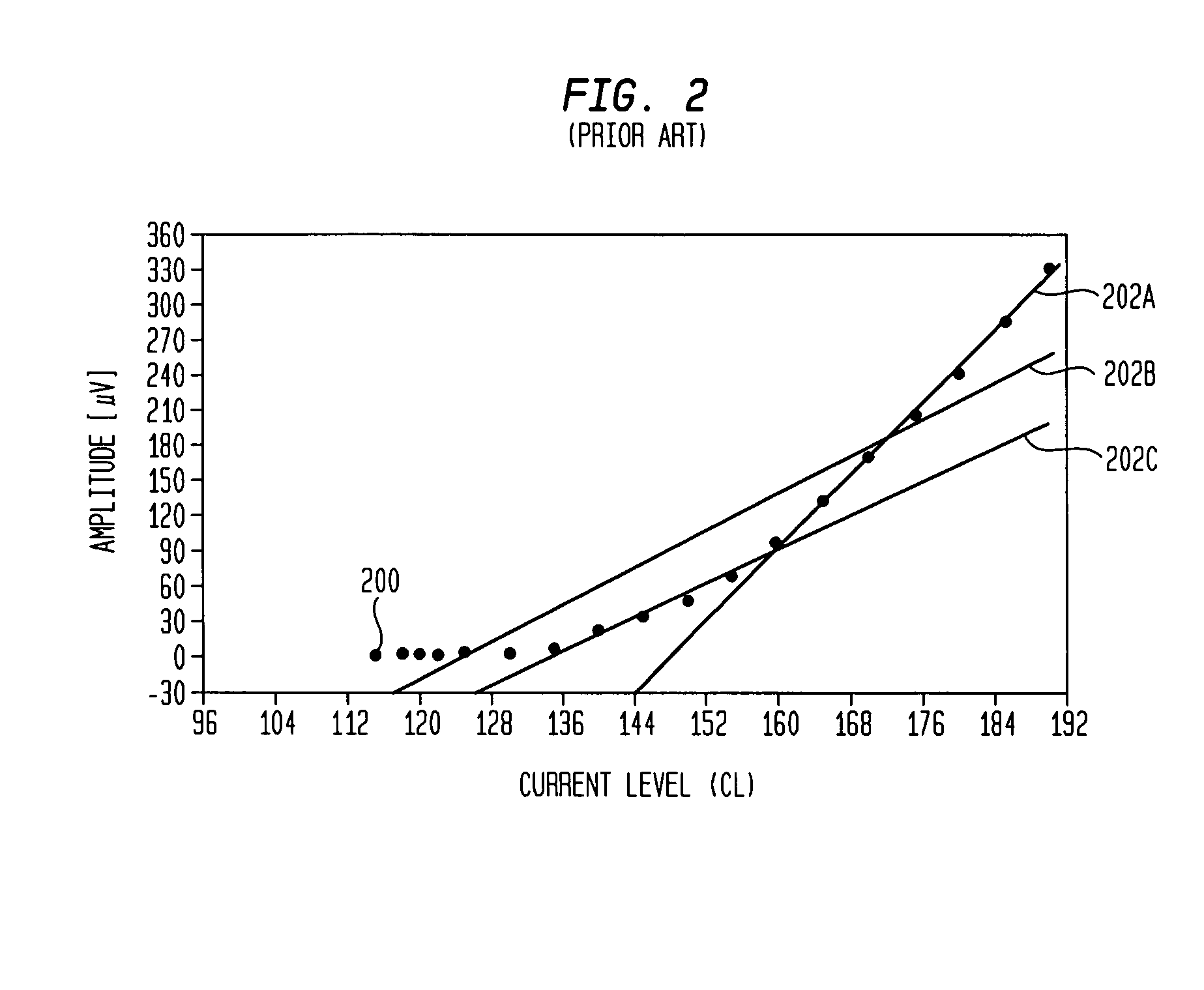Automatic Determination of the Threshold of an Evoked Neural Response
a neural response and threshold technology, applied in the field of automatic determination of the threshold of an evoked neural response, can solve the problems of conductive hearing loss, impeded normal mechanical pathways for sound to reach the hair cells in the cochlea, and impaired hearing
- Summary
- Abstract
- Description
- Claims
- Application Information
AI Technical Summary
Problems solved by technology
Method used
Image
Examples
Embodiment Construction
[0043]The present invention is directed to automatically analysing an evoked neural response to determine the threshold Neural Response Telemetry (T-NRT) while avoiding the above and other drawbacks of conventional approaches. Generally, the systems, methods, techniques and approaches of the present invention apply electrical stimulation to a target neural region at incrementally greater current levels beginning with an initial current level that is as close as possible to a typical T-NRT level; record an NRT measurement of an auditory signal which generated by the target neural region in response to the stimulation; and utilize a machine-learned expert system to predict whether the NRT measurement contains a neural response based on a plurality of features extracted from the auditory signal.
[0044]In one embodiment, the initial current level is selected to insure safety while minimizing the quantity of measurements required to determine the T-NRT. As such, in post-operative applicat...
PUM
 Login to View More
Login to View More Abstract
Description
Claims
Application Information
 Login to View More
Login to View More - R&D
- Intellectual Property
- Life Sciences
- Materials
- Tech Scout
- Unparalleled Data Quality
- Higher Quality Content
- 60% Fewer Hallucinations
Browse by: Latest US Patents, China's latest patents, Technical Efficacy Thesaurus, Application Domain, Technology Topic, Popular Technical Reports.
© 2025 PatSnap. All rights reserved.Legal|Privacy policy|Modern Slavery Act Transparency Statement|Sitemap|About US| Contact US: help@patsnap.com



